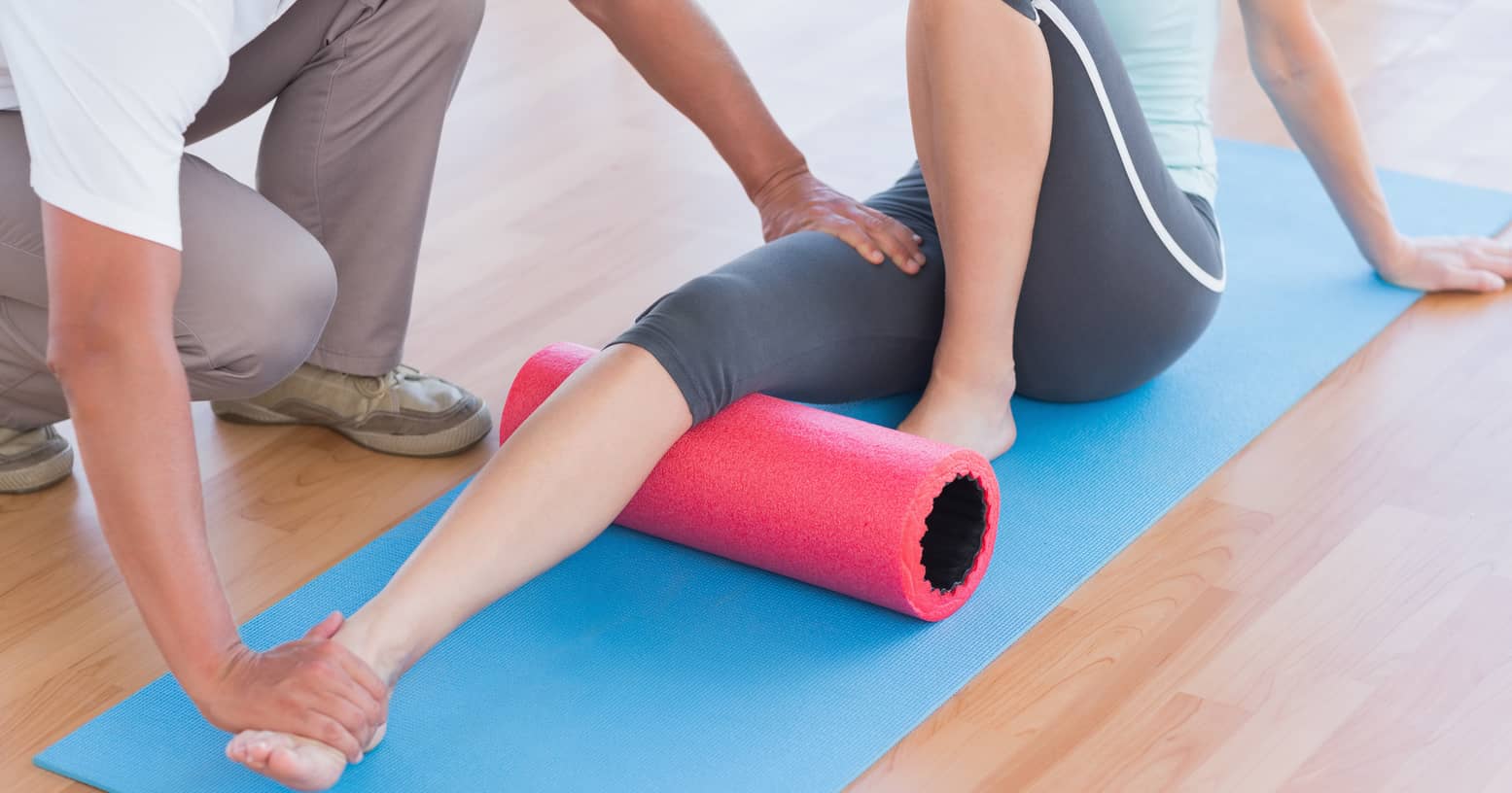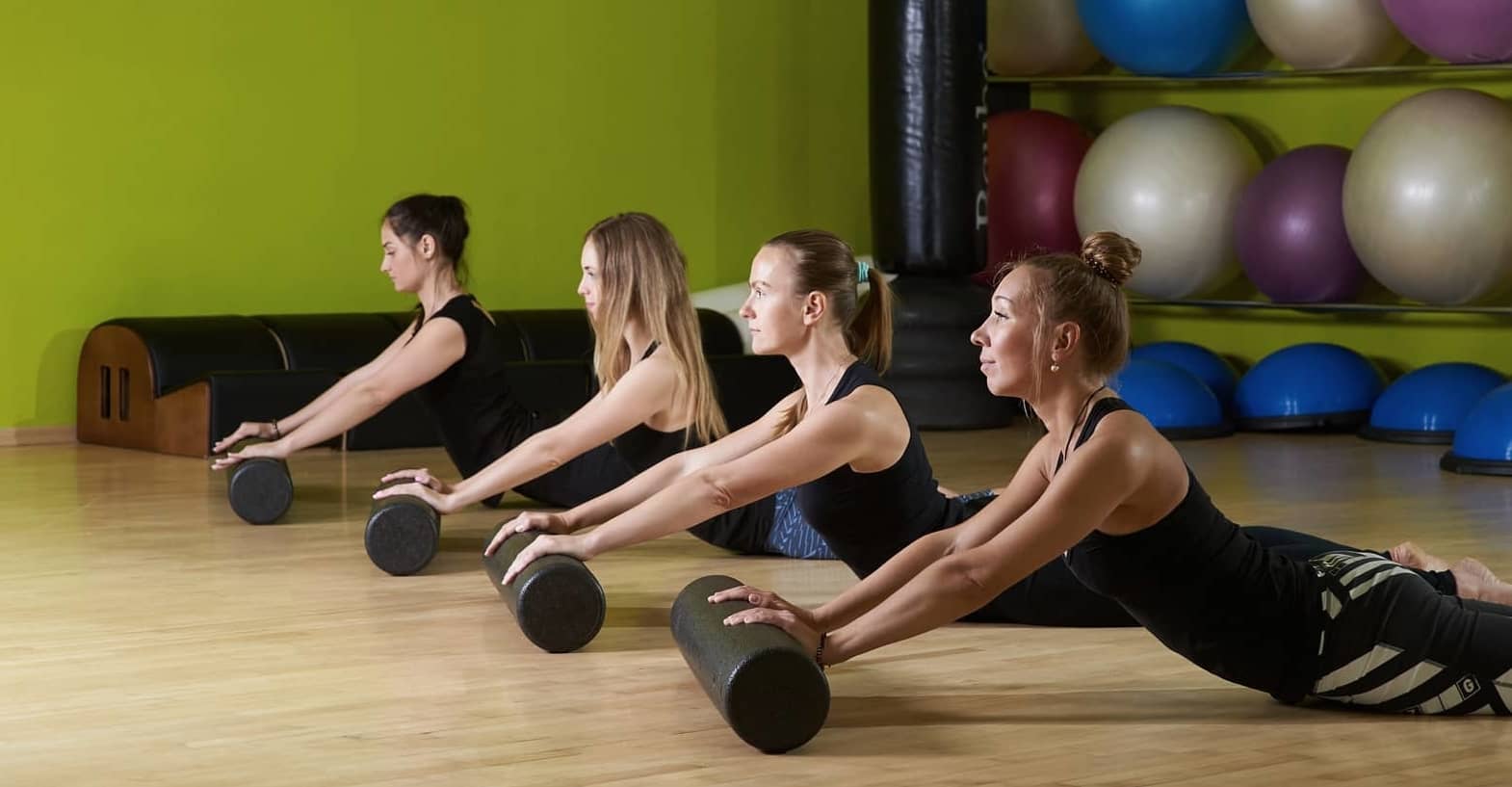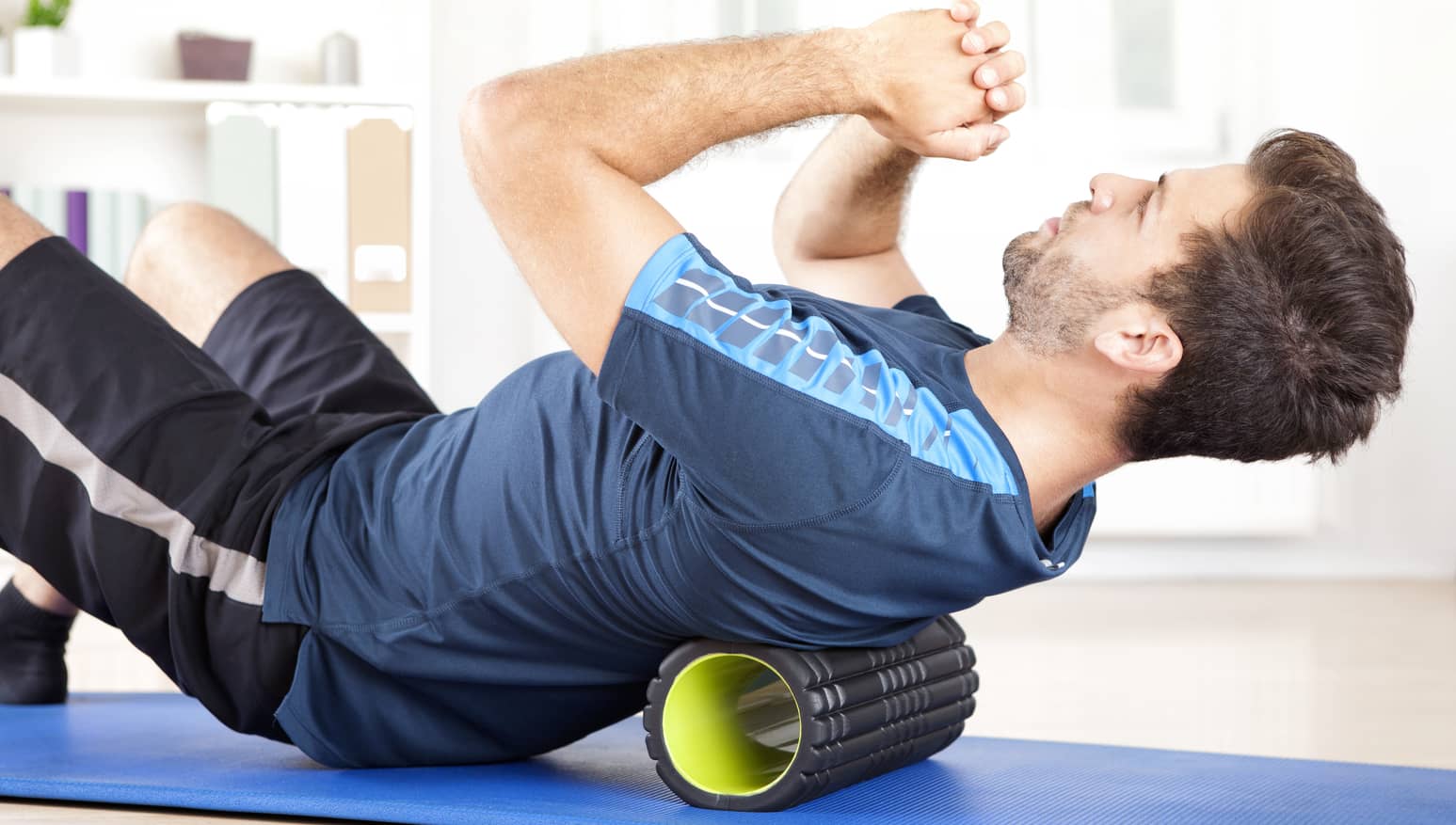What Is a Foam Roller & How Do I Use It for Massage Therapy?
For those who train heavily, whether doing cardiovascular exercise or strength training, delayed-onset muscle soreness, or DOMS, is a sometimes-distracting side effect of exercise. At best, DOMS causes mild discomfort, and at worst, it can negatively impact future workouts. Continue reading to learn more.
If you are interested in helping others through massage therapy, be sure to fill out the form on this page to get more about our wellness programs.
There are many philosophies when it comes to treating DOMS. One involves lightly training–even something as simple as walking or going for a jog. Another popular way to treat DOMS is through the use of a foam roller. Foam rollers are popular tools for self-massage techniques, and you don’t even need to become a massage therapist to reap their benefits. Below, we will examine how the foam roller works as a massage tool, as well as some ways to use one to alleviate muscle soreness and tightness.
How Do Foam Rollers Work?

The foam roller, while it is a simple tool, has a powerful effect on muscle tissue. Foam rollers operate through a process known as myofascial release. This is a method that acts directly on the fascia, a connective tissue web that covers the muscles and other body structures.
The fascia is a dense network of tissue, and after strenuous exercise, it may become tense, causing painful pressure. By using a foam roller, those experiencing muscle soreness may be able to relax the fascia, causing relief from pain.
Often, foam rollers are made of dual-density foam: they have a firmer inner core designed to apply enough pressure on the fascia, as well as a slightly softer outer layer for comfort. As you use the foam roller, the myofascia on the sore part of your body is pressed between your body weight and the dense core of the roller.
If you have ever taken massage therapy classes, you may have picked up on the fact that foam rollers seem to work similarly to a traditional massage: the combination of pressure on the muscles, as well as effectively pulling and releasing the myofascia, ultimately helps stretch out the fascia and cause some relief from pressure.
In addition to helping relieve muscle soreness, self-massage with a foam roller may help improve flexibility. While occasional use improves flexibility in the short term, some evidence suggests that regular use of a foam roller may improve long-term flexibility as well.
While more research is necessary to determine the exact mechanism of action of the foam roller, countless recreational and professional athletes swear by it. And because foam rollers can often be purchased very inexpensively, they are an accessible tool even for those who don’t have much money.
Now that you know a bit about how foam rollers work for massage and relief of muscle soreness, we’ll look at how to use one. While the possibilities of foam roller use are virtually endless, we’ll also include a few example exercises to get you started.
How Do I Start Using a Foam Roller?

We mentioned above that foam rollers apply pressure to muscle tissue by using your bodyweight and the foam roller’s dense core. As you move your body over the tool, the foam roller applies and then releases pressure on the fascia over your muscle tissue. This process is a fairly straightforward one, but before you start foam rolling, it’s important to take into account a few precautions:
- Don’t foam roll your lumbar spine – this applies pressure directly on the spine, which can make some back issues worse.
- Foam roll slowly – moving slowly (about an inch per second) will help you make sure the roller has adequate time to apply and then release pressure.
- Foam rolling should be mildly uncomfortable, but not painful – if you are in significant pain or are foam rolling a very sore or tender area of your body, you should stop and have a qualified professional help.
If you have concerns over the proper use of a foam roller, it may be helpful to ask your doctor or a certified personal trainer.
What Are Some Exercises to Start With?

As noted above, the possibilities for using a foam roller are endless, but it’s often helpful to start with a few well-known exercises. Foam rollers are popular with runners, as they are often very helpful for relieving pain and soreness in the legs. Foam rolling your calves and hamstrings is a great way to speed up recovery after a heavy leg day or after going for a long run.
To do this, rest your calves (or hamstrings) on your foam roller as you sit on the ground. Then, using your hands to raise your body off the ground, shift yourself slowly forward and back again so the roller rolls against your leg.
With this exercise and others, it may be helpful to experiment with how much of your body weight you put on the roller. It’s important to remember that more body weight translates to more pressure, which generally means a more effective myofascial release. However, while foam rolling is almost always somewhat uncomfortable, it should not be painful. If you experience pain, try lessening the amount of body weight you put on the roller. It takes some time to develop a feel for what works for you.
Foam rollers are commonly used for legs, but they can be a great way to soothe sore abdominal muscles as well. In order to foam roll your abs, lie down over the foam roller with your legs on the floor. Then, using your arms to walk forward and then backward, you can roll your body over the roller. Most roller exercises work similarly–you’ll need to position your body over the foam roller, apply as much of your body weight as you’re comfortable with, and then slowly apply to foam roller over the sore area.
In Conclusion
Research may not be able to tell us the exact mechanism that makes myofascial release so effective for relief of muscle soreness, but the foam roller is nonetheless an economical and effective tool for self-massage. Whether you’re a runner, a weightlifter, or just someone who finds themselves carrying a significant amount of muscle tension, the humble foam roller can help you become happier and more comfortable.
Massage Therapy Training
If you would like to learn more about training as a massage therapist, fill out the form on this page to get more information about the Fremont University wellness programs. For those interested in touring our campus, simply call (800) 373-6668 to schedule a free one-on-one tour.
*In no way is it recommended that you try to treat injuries by yourself. That should be done by a qualified professional. Before practicing any new modalities or techniques, check with your state’s regulatory authority to ensure they are within the state’s defined scope and standards of practice for therapy. In no way does Fremont University promise or guarantee employment or level of income/wages.

